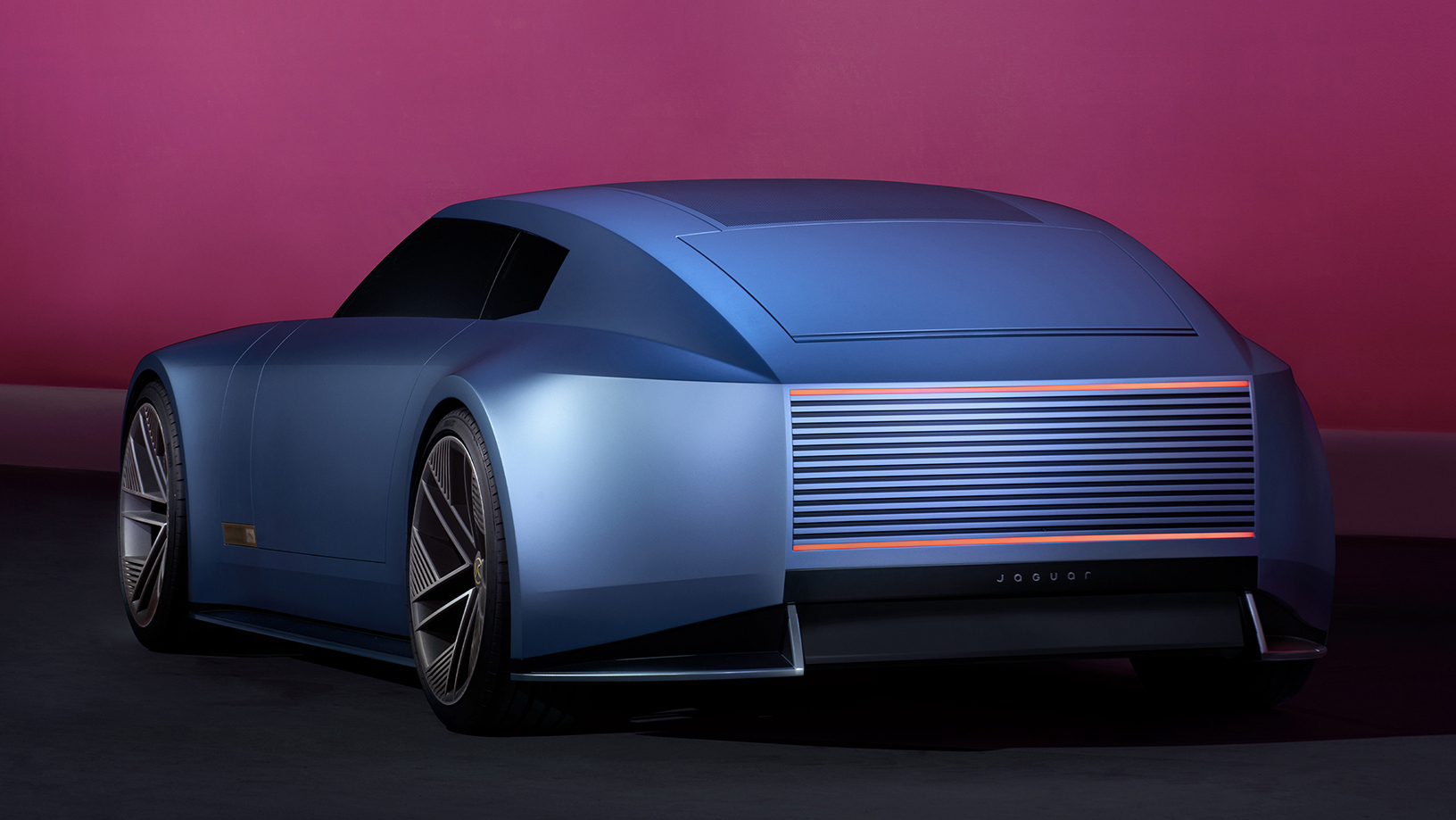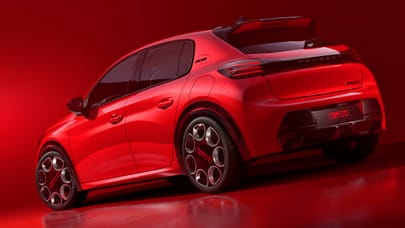
EXCLUSIVE: Jaguar boss explains how the Type 00 can save the company
Love for Jag never paid the bills, so how will the bold new direction? TG chats to MD Rawdon Glover
People love what Jaguar has been. A measure of that love is the social-media pitchfork mob that assembled around its plans to change. But love never paid the bills.
When Jaguar made brave cars – the final-shape XJ, the I-Pace, the second-generation XK8 – they struggled to sell. When it made cautious cars – the E-Pace, the XE – they struggled even more. JLR's own HQ company car park was full of Discoverys and Range Rovers, not Jaguars. These people couldn’t even sell free Jaguars to themselves. I'm concerned this latest directional swerve, to brave and expensive cars, might meet a similar fate.
Everyone wanted Jaguar to be successful but too few did the one thing that would have made it so: buy one. Can this paradox be cracked?
I'm here to ask Rawdon Glover, Jaguar's MD, for evidence that points to success for the dramatic new direction. "We have researched this intensely," he tells TopGear.com. "We've spoken to about 1,000 prospective clients, across the UK, North America, Europe, and China. We've talked to them in detail about our brand. And we've shown them the model lineup. One of the tools we use is conjoint analysis, which is very good at getting to what people are prepared to pay for a product.
"We show them the exterior, then the interior, talk about the specification. That gives us confidence in this product proposition – it's got to be a step change from what we do today and it's got to look like it's worth £120,000. We put it in that context of competitor cars as well. Some people get it straight away and think it's fantastic, want to order one. Some people, it's not for them."
But because the proposed high price means more profit per car, he's not proposing selling big numbers. That insight, he says, has further emboldened the team. And Glover stresses that it won't just be about the cars.
"The clients told us you've got to change the brand and the whole ownership experience. So we've looked at every element because it all adds up to this term 'willingness to pay'."
The dealers will be different, presenting the cars beautifully, not just standing them on a carpet. They'll offer you fancy food and drink, talk about collabs with artists and the like. For owners, Jaguar plans storytelling about how the cars come to be, even dialogue with the creators. "Buyers want to be treated like an insider. They'll have podcasts of Gerry [McGovern, design head], our engineers, access to information that they wouldn't otherwise get. They're joining a community."
The pain of servicing will be eased too. The car can automatically alert Jaguar of its own needs, so Jaguar will plan the dealer appointment and get a courtesy car – the same sort you're driving, not some pool Disco Sport – to where you need it.
OK, that's the future. Glover explains why Jaguar's strategy so far this century couldn't work. Jaguar is too small to play in the mass-scale premium market, however inspired some of the cars might have been. Bigger rivals could always outspend Jaguar, and so out-engineer and out-tech it, making their lead unassailable. "It's dominated by purchasing and manufacturing efficiencies, and economies of scale."
Top Gear
Newsletter
Thank you for subscribing to our newsletter. Look out for your regular round-up of news, reviews and offers in your inbox.
Get all the latest news, reviews and exclusives, direct to your inbox.
Creativity wasn't enough for Jaguar. In fact, over the past 18 months things have gone bad for BMW, Mercedes and Audi in China, one of their main profit engines, because Chinese buyers have switched to local-brand high-tech cars. That further justifies Jaguar's new high-end boutique-car strategy, says Glover.
So in his view this rocky couple of decades wasn't caused by any deficiency in Jaguar's image. Really? The brand is OK? Why not just invent a new one, like Lucid or HiPhi or Neo or Yangwang? Glover leans back in his chair and pauses. It's clear he considered it. But he says the shareholders at Tata hold Jaguar dearly. And that on many normal metrics of brand value – spontaneous awareness, familiarity, aspiration – it scores high. "I'd turn it around and say, well, if you were one of these Chinese brands, what would you give for that?"
He also laughs off the idea of adding his cars to the Range Rover brand, as when Porsche took a huge bifurcation by adding the Cayenne to its sports cars. JLR is busily separating Range Rover from Discovery from Defender, in their brands as well as their ranges. Jaguar has to be separate too, Glover insists. He says the new Jaguar platform isn't just low-slung, it has different proportions and overhangs from a Range Rover and will drive very differently.
Lots of BEVs are quite homogenous; aero means they look like a bar of soap
And if Jag's image has been corroded by tackle like the X-Type diesel estate or shonky golf club saloons, it might not matter by 2026 when the first new Jaguar goes on sale. Forgettable cars get forgotten. Memorable ones get remembered, especially when the dealers' walls carry glossy prints of George Best with his E-Type and Steve McQueen with his XK-SS and ’70s-cool XJ-Ss and the most rakish of historical saloons. The great fashion brands, he says, can revisit their heritage in a way that feels wholly modern.
One last thing. Is there actually a market for £120,000 electric cars? Jaguar will sit, in price, between the top-end premium – EQE, Lucid, certain Chinese – and the über-lux Rolls and Bentley. "We think there's white space not just in price, but for a brand that's being more disruptive. People buy cars for their design and interior. Powertrain is about 13th on the list."
Ah, the electric thing. "Lots of BEVs are quite homogenous: cab forward design, small wheels that are good for range, higher riding because of a battery. Aero means they look like a bar of soap. You end up with vehicles that don't have emotional resonance. We've made the antidote. It's completely different. It's going to have incredible presence on the road."
But surely there are other reasons why high-end EVs are sticking? "It's an S-curve, right? It's been really steep. It's flattened off. It's going to go again. The vehicle's going to launch in 2026 and have an eight, nine year life. I'm looking at where the market's going. But people aren't going to buy this because it's electric.
"They're going to buy it because they think it's beautiful and the brand resonates."

Trending this week
- Car Review
BMW iX3









